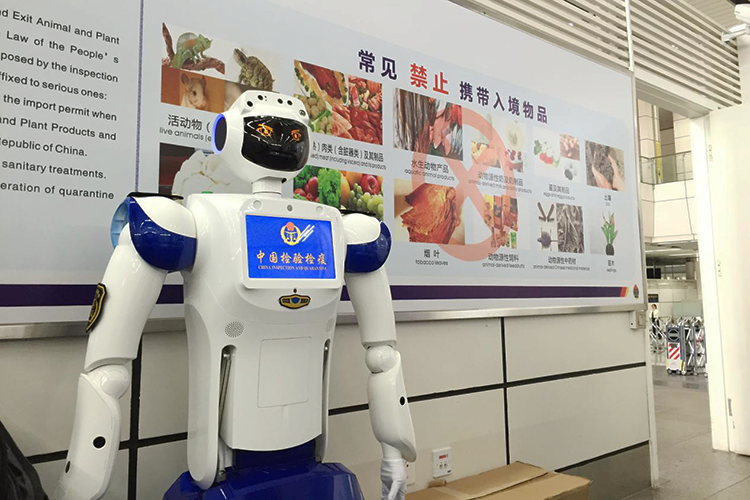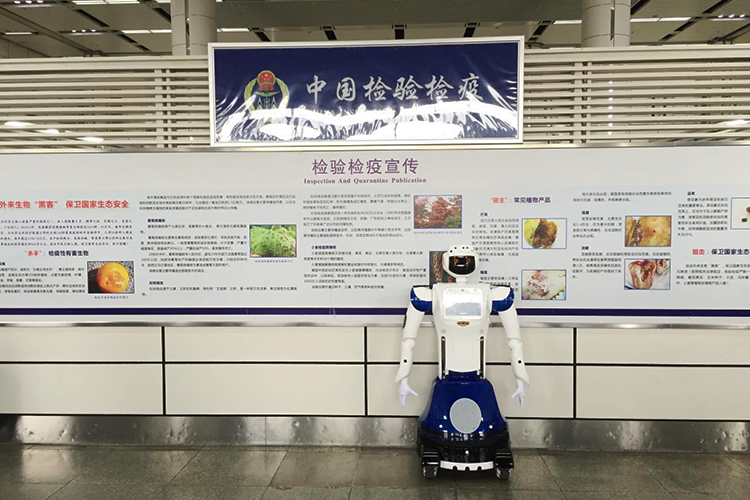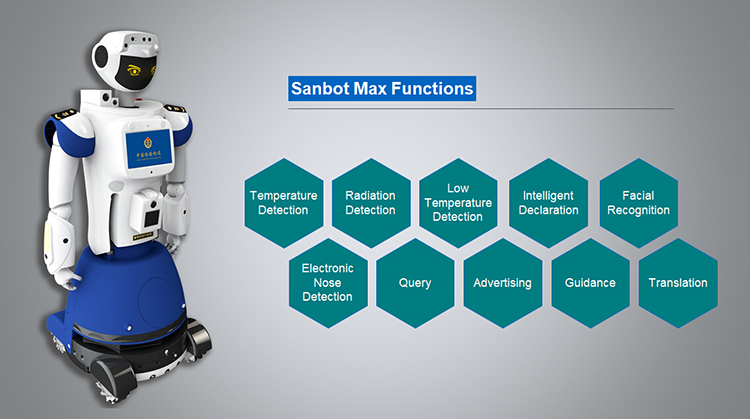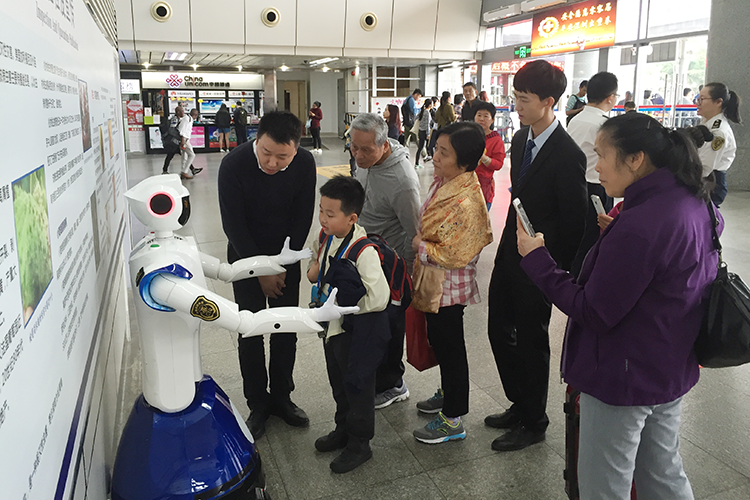It is one cautious job for the personnel who works at the customs: they have to know who is entering and leaving the country, and ensure nothing bad or banned enters their country. Each country has different laws of entry-and-exit of the fruit with seed, live food animals or other stuff because they may cause unexpected danger to one country, so inspection must be strict to stop these food and stuff. Now, more people populate the globe and more people are traveling. This situation makes the customs inspection job awfully stressful.
In this situation, customs adopt AI to help them with their customs inspection, making the job less stressful, but much more accurate and more efficient. Then, Sanbot Max “Customs Inspector” is here.


“Welcome to Shenzhen Bay Port, I am the electronic customs inspector. When leaving or entering China, all the passengers should abide by the laws and regulations of China Inspection and Quarantine and receive the health condition inspection.” On November 27th, one 1.45-meter tall humanoid robot was broadcasting customs knowledge at Shenzhen Bay Port.
The intelligent humanoid robot is customized from Sanbot Max robot, QIHAN’s newest intelligent service robot. The robot, wearing the badge of China Inspection and Quarantine Bureau, now works as the customs inspector for Shenzhen Bay Port. The Sanbot Max customs inspector integrates infrared thermal imaging system, nuclear radiation monitoring system, facial recognition and other special inspection technologies together for customs.


At the port, Sanbot Max helps detect and inspect the passengers and banned food or stuff in their luggage. If the advanced service robot find the passenger whose temperature is higher than 37.3 degrees Celsius, stuff with exceeded radiation, banned frozen meet or fruit, or any other banned stuff, the intelligent “customs inspector” will capture the image of the passenger or banned stuff and automatically send the image to monitoring center and link the mobile terminal, to inform working personnel for further inspection.


In addition to customs rules broadcasting and advertising, Sanbot Max can offer query services for the passengers about the special quarantine laws and regulations. The international passengers can choose their mother language to have voice interaction, or check out from the touch screen to learn about the knowledge of China Inspection and Quarantine, thanks to the robot’s multi-language capability: Mandarin, Cantonese, English and other languages.
Just on the first day Sanbot Max worked there, it attracted many passengers to make inquiries. “Can I bring fruit when going through the customs?”, “Can I bring HPV vaccine?”, “Can I bring my pet?”. Facing these questions, Sanbot Max responded fluently. What’s more, the professional inspector’s attitude is always good with smile, and it never felt tired.

From the Shenzhen Entry-Exit Inspection and Quarantine Bureau, Sanbot Max intelligent robot takes over much of the repetitive work and saves massive time for customs personnel, and its AI inspection is more accurate and strict. Both the customs and passengers enjoy the charming and convenience of the AI robot. In the future, the Sanbot Max will work for more ports in Shenzhen, or even in China, to benefit the customs and passengers.